- Home
- Tom Clancy
Airborne: A Guided Tour of an Airborne Task Force Page 21
Airborne: A Guided Tour of an Airborne Task Force Read online
Page 21
This is not to say that these other missions are not vitally important. They are. So much so that precedent was recently broken when the head of the USAF’s Air Mobility Command, General Ronald Fogelman, was elevated to the job of Air Force Chief of Staff. In a way, it was a reward for the unprecedented job that AMC had done in supporting (and in some cases rescuing) the foreign policy initiatives of the Clinton Administration. I would like to believe, though, that it was a recognition that there are other things of importance that airpower can deliver besides killing power on enemy aircraft and cities. AMC and the support communities within the USAF’s Air Combat Command (ACC) deliver a huge boost to the missions of services other than the Air Force. From hauling Army paratroops, to refueling Navy and Marine tactical aircraft, and providing close air support for Allied ground troops, these aircraft and their crews are perhaps the most powerful part of America’s empire of airpower.
Back in the first chapter, I spent a considerable amount of space and time explaining the development of transport aircraft and their importance to airborne warfare. This is a vital introduction, for without the cargo aircraft to fly them off to war, airborne units would not even exist. While these statements are patently obvious, their real significance to the concept of strategic mobility goes far beyond the single act of letting paratroops jump out to do battle. Transport and support aircraft are the trucks of the sky for the U.S. Air Force. This mission alone would justify the significant part of the federal budget that has been spent on transport aircraft. Still, as USAF leaders have often pointed out to me, without the Air Force, airborne units are just well-trained infantry with a bad attitude. Even Army airborne troopers would concede that this is true.
Inter-service rivalries aside, the history of Air Force support for Army airborne and ground operations is both long and distinguished. Historically, it has primarily centered on transporting airborne units to their drop zones (DZs), and then resupplying them until follow-on forces arrive to relieve them.
This simple description is fraught with risk and danger, though. By their very nature, anything that does not help get transport aircraft into the air is a waste of potential payload. Adding armor and self-sealing gas tanks to a cargo airplane would only take away from its primary mission: moving people and stuff by air. So when transport aircraft go into harm’s way, they do so with very few of the survival features that would allow them to stand up to surface-to-air missile (SAM) or antiaircraft artillery (AAA) fire.
The history of airborne operations is replete with stories of transport crews piloting their burning aircraft and sacrificing themselves so that they could deliver their loads of troops and supplies onto their DZs. The British drop on Arnheim during Operation Market Garden in September of 1944 resulted in a fistful of Victoria’s Crosses for transport crews. Similar decorations have been the norm for U.S. transport crews in operations from Sicily in 1943 to Khe Sahn in 1968. While some fighter and bomber general might see transport crews as just glorified airline personnel, they do a vital, unloved, and sometimes downright dangerous job.
Another group of Air Force personnel looking for a little respect are those that fly close-air-support (CAS) and forward-air-control (FAC) aircraft. From the point of view of the 82nd’s paratroopers, you could not want a more important group of people over your head in a fight. The men and women who fly FAC/CAS planes are the flying eyes and artillery of the airborne task force. Ever since the Marine Corps first came up with the idea of dedicated front-line air support, ground troops have turned their eyes skyward, and prayed that the planes overhead would be theirs. Today, the airborne troopers of the 82nd have to depend on CAS/FAC aircraft if they are to succeed in their mission.
In this chapter, we’ll try and show you some of the machines flown by the U.S. Air Force to support the troopers of the 82nd: the C-17 Globemaster III and C-130 Hercules, which haul the people and cargo; the KC-10 Extender deployment tanker; and the A/OA-10 Thunderbolt/Warthog, which provides the airborne with FAC and CAS services. In doing so, I hope that you will gain some insight into why they are both necessary and essential to our national interests, and to the brave men and women of the 82nd Airborne Division.
Warthog: The Fairchild-Republic A/OA-10 Thunderbolt II
I take back all the bad things I have ever said about the A-10.
I love them! They’re saving our asses!
—General Chuck Horner, USAF Press Briefing,
Desert Storm, January 1991
Officially, it’s called Thunderbolt II, recalling the heritage of one of the great American propeller-driven fighters of World War II, the powerful Republic P-47 Thunderbolt. But in the Air Force everyone calls it the Warthog, recalling a mean-tempered and extraordinarily ugly African relative of the pig. With perverse pride, A-10 pilots and ground crews shorten this to “Hog,” a name and attitude that they love. Like the similarly named offensive line of the Washington Redskins, they and their airplanes are the “bad boys” of the USAF. Hog drivers and their steeds take the abuse and compliments that result with their own special attitude. Few aircraft in aviation history have been subject to so much ridicule as the Warthog. You often hear jokes like: “The only Air Force jet vulnerable to bird strikes from the rear.” “The airspeed indicator is a calendar.” “Above five hundred feet the pilots think they need oxygen.” “It’s got the radar cross section of Mount Rushmore.” For all of these put-downs, the A-10 is one of the finest CAS aircraft ever built, perhaps the best of all time.
A quick review of 20th century warfare shows that close air support (CAS) has been one of the most decisive and direct uses of airpower. Perhaps not as sexy as shooting down enemy fighters or dropping laser-guided bombs, but to ground troops certainly the most personal and useful to them. Direct use of aircraft to support ground operations date back to the American Civil War (1862) observation balloon ascents of Professor Thaddeus Lowe during the Peninsula Campaign. Interestingly, the first use of CAS was by the United States Marine Corps (USMC) during their “Banana Wars” in Central America in the 1920s. In fact, it was the observation by Germans of early USMC CAS tactics that led to their adoption by the new Luftwaffe. By the outbreak of World War II, the Germans had made CAS into a virtual science, and the planes designed for this unglamorous mission became some of the stars of combat aviation history.
CAS was one of the keystones of the German Blitzkrieg (literally “Lightning War”) doctrine early in World War II. During the first year of the war, the famous JU 87 Stukas (from the German word Sturzkampfflugzeug or dive bomber) and other bombers operated as flying artillery for the early conquests of the Wermacht. By the summer of 1940, though, they were decimated by modern British fighters like the Hurricane and the Spit-fire. A year later, when the Germans faced the Red Army’s increasingly powerful tanks, they discovered the limitations of dive bombing. On the fourth day of the Operation Barbarossa (Hitler’s invasion of the Soviet Union in June 1941), a force of thirty-six Stukas attacked a concentration of sixty Soviet tanks, scoring only a single kill against the armor. What had happened was that the blast/fragmentation bombs the Stukas were using needed a direct hit to destroy an armored vehicle. The technology of modern antiarmor cluster munitions was years in the future. Clearly, new tank-busting weapons were needed to penetrate the thick armored hides of Russian tanks and again make CAS aircraft a viable force for the Luftwaffe.
One of the most attractive options was mounting heavy, tank-busting cannons (with armor-penetrating shells) on tactical aircraft. By 1942, the Luftwaffe had deployed the new JU 87G-1 version of the Stuka, equipped with a pair of pod-mounted 37mm cannon slung beneath the wings. The centerline bomb rack of the JU 87G-1 was retained, but the dive brakes were deleted, since very steep dives were not required to hit and penetrate the vulnerable top, side, and rear armor of tanks like the Russian T-34. The new cannons proved highly effective, and some pilots began to rack up amazing scores. Stuka pilot Colonel Hans-Ulrich Rudel was credited with some 519 tank kills and destroyin
g a 26,000-ton Russian battleship. When a single flyer can demolish a whole Soviet Guards Tank Army (and a battleship!), you’ve really got a “force multiplier.”
By the end of the war, the Luftwaffe had fitted antitank guns as large as 75mm in purpose-built CAS aircraft like the heavily armored, twin-engine Hs 129B. Only twelve of the big 26-1b/11.8-kg 75mm shells were carried by each Hs 129, but pilots were trained to fire four-round bursts at 500 meters/547 yards, where it was hard to miss. No tank of the era could take the pounding, and thousands of Soviet tank crews paid the price.
The Luftwaffe also paid a high price for their CAS efforts. One of the toughest lessons learned was that conducting CAS operations in airspace that you do not fully control results in heavy losses to enemy fighters and ground fire. Even the indomitable Colonel Rudel was shot down many times during the four-year war with the Russians, losing a leg, but still flying at the finish of hostilities in 1945!
The Russians developed their own tank-buster during the Great Patriotic War (the Soviet name for their battle with Germany), the legendary IL-2 Shturmovik. This was the toughest CAS aircraft of the entire war. The entire front section of the IL-2’s fuselage was a 1,500-1b/680-kg shell of 7mm/.275-in steel plate, with a 52mm/2.05-in-thick laminated bullet-resistant glass windscreen. The Russian designers had started with the premise that a proper CAS aircraft should be a direct extension of armored vehicles on the ground, and thus created a “flying tank” in the IL-2. Their assumptions paid huge dividends. The IL-2 was armed with two 20mm, 23mm, or 37mm cannon, plus bombs and/or rockets. This truly did make the Shturmovik a flying tank, and a direct precursor to the modern Mi 24 Hind helicopter gunships that are still in use today. A later model, the improved IL-2M, carried a tail gunner with a rear-firing defensive machine gun.
The IL-2 was easy to fly, and could be repaired under extreme field conditions, and the rugged landing gear could handle muddy or frozen dirt runways. There is even a story that a bent propeller on a Shturmovik was once straightened out with a sledgehammer! Over 35,000 of these amazing planes were built during the war.
There was more to the Shturmovik legend than just simple toughness, though. There was what we Americans might call a “warthog” spirit around the IL-2 crews, and it caused more than a little fear in their German opponents. A quarter century later, these qualities of the Shturmovik would influence the design and development of the A-10. Attacks by Shturmoviks were pressed at altitudes down to just 30 feet/10 meters, and gave the IL-2s devastating lethality against German armor. Near the town of Kursk on July 7th, 1943, a Shturmovik regiment knocked out seventy tanks of the 9th Panzer Division in just twenty minutes, the equivalent of an entire Panzer regiment destroyed!28
One of the bits of conventional wisdom about World War II is that the United States and their allies drove to victory under a virtual umbrella of airpower. It is therefore ironic that the air forces of the Western Allies never developed a really successful CAS aircraft design during the Second World War. Despite efforts that resulted in marginal designs like the North American A-36 Apache (the precursor to the classic P-51 Mustang) and the British Fairey Battle, most Allied CAS operations were conducted by fighter aircraft. Equipped with rockets, bombs, and fuel tanks filled with napalm (jellied gasoline), these fighter bombers did devastating damage to Axis ground forces around the world.
What the Americans and British did contribute to the science of CAS in World War II was the matter of proper coordination with ground forces. Prior to America’s entry into the war, the USMC had done some pioneering work on developing compatible radio systems for aircraft and ground units, and integrating them into CAS operations. By the middle of the war, Allied ground forces could actually call air strikes onto targets just yards/meters in front of their own positions. The British called their on-call CAS missions “cab-rank” strikes, giving you some idea just how close the support could be. There were similar strikes by 8th and 9th Air Force P-48 Lightning and P-47 Thunderbolt fighter bombers, as well as by the classic F4U Corsairs of the Marines in the Pacific. By the end of the conflict, the Allies had achieved a level of air-ground coordination that has been a benchmark ever since.
The U.S. did produce a first-rate CAS aircraft in the years just after World War II, though that was only one of the missions that it was designed to accomplish. Developed as a naval strike aircraft to replace the famous Grumman TBF torpedo bomber, this classic American piston-engined CAS plane was the Douglas AD (later redesignated A-1) Skyraider. Designed by the brilliant Ed Heinemann for the U.S. Navy at the end of World War II, it first entered service in December of 1946, and improved models served as first-line carrier strike and support aircraft until 1968! Over three thousand were built, and some still serve in foreign air forces today.
The AD-6 version was a single-seat fighter, with an 18-cylinder Wright Cyclone radial engine delivering 2,700 horsepower to a four-bladed propeller. Armament was four 20mm cannon and up to 8,000 lb/3630 kg of bombs and rockets on up to fifteen weapon racks. Stable and reliable as an old plow horse, it was a favorite among flight crews. Despite its being replaced in the strike role by newer supersonic fighter-bombers in the late 1950s and early 1960s, there was still life in the A-1s.
As the war in Vietnam escalated, old Skyraiders were taken out of storage and rebuilt for service in Southeast Asia with the U.S. Navy, Air Force, and Marines and the Republic of Vietnam. The newer jets did not have the ability to put ordnance on targets as well as the slower, old Skyraiders. Their weapons-delivery systems were designed to lob nuclear weapons, not deliver pinpoint bomb strikes. Also, the greater loiter time of the old ADs made it possible for harried ground units to keep CAS aircraft overhead longer. Finally, their ability to absorb battle damage meant that Skyraiders often came home missing big pieces, while the newer supersonic jets were often lost to a single “golden BB” fired from small-caliber weapons. All this meant that a surplus airplane older than some of its pilots was performing the CAS mission better than multi-million-dollar machines designed to deliver nuclear weapons. This had major repercussions when a new CAS airplane was needed in the late 1960s. That airplane would become the A-10.
By the late 1960s, it was clear that the Air Force would need to replace the Skyraider, though not many in the USAF leadership wanted the new bird. From the very beginning, the new CAS aircraft was a bastard child within the USAF. It was designed for a mission they didn’t want, in order to keep the Army and Marines from grabbing a bigger budget slice for CAS. A whole series of inter-service treaties dictated that CAS was a “blue” mission that would be handled for the Army by the USAF.29 The truth was that the USAF leadership of the day could not have cared less about the CAS mission and the troops on the ground that it was supposed to support. They would have been much happier buying fighters and nuclear-armed bombers to accomplish what they saw as the “real” missions of airpower. Pilots of sleek, fast, pointy-nosed fighters (including those who become USAF generals) think of CAS as “air to mud” combat, and often consider it beneath the dignity of an officer and gentleman. So in reality, the USAF’s desire to control the CAS mission was really just a money and power grab, designed to deny the Army control of money and the airspace above the battlefields of the future.
A Fairchild Republic A-10A “Warthog” in flight. This heavily armed and armored aircraft is the backbone of the U.S. Air Force’s Close Air Support force.
OFFICIAL U.S. ARMY PHOTO
Just one little problem, though, and that was that the Congress and U.S. Army expected (and forced) the USAF to build a “real” CAS airplane for use in the 1970s. Grudgingly, the USAF complied with the mandate and started the A-X (Attack Experimental) program to accomplish that task as cheaply and quickly as was possible. When the competition for a new A-X prototype was initiated, a number of aircraft companies submitted designs to the USAF for consideration. Two finalists were selected, and in 1972 a fly-off between Northrop’s YA-9A and Fairchild-Republic’s YA-10A was conducted. Northrop’s conv
entional design was more maneuverable, but Fairchild’s entry was judged to be more survivable in a “high-threat” environment (such as the European Central Front or Korea). Some design changes to accommodate USAF wishes were added, and the first production aircraft were delivered in the spring of 1976. Production ended in the 1980s after 650 had been delivered. In late 1996, some 231 remained in service with the U.S. Air Force, the remainder having been retired into storage or lost operationally. Hopes for foreign sales to the Republic of Korea and Turkey never materialized, as much due to the superb marketing of the F-16 (which was sold as a competitor) as anything else. However, the type will remain in service, mostly with National Guard and Reserve units, well into the 21st century, thanks to the brilliant performance of the A-10 community in Desert Storm.
With our history lesson done for now, let’s have a look at the Warthog. WEFT: Wings, Engines, Fuselage, Tail. These are the four key features you memorize when studying aircraft recognition, and it is a good way to start examining the A-10. For at certain angles, the Hog is almost a dead ringer for the World War II-vintage B-25 Mitchell medium bomber that was used by Jimmy Doolittle’s Tokyo Raiders to bomb Japan. The Mitchell had a reputation for being one of the toughest, most survivable aircraft of the era, and those same qualities are at the core of the A-10’s design.
The A-10’s broad, thick, low-mounted wings are almost perfectly straight. The absence of wing sweep angle tells you right away that the A-10 is a subsonic design. The wingspan is 57 feet, 6 inches/17.53 meters, and the tips are rounded off with a graceful twist. This, by the way, is the last graceful thing you will see on the Warthog’s airframe. There is a stubby pod about mid-span on each wing, and the rubber tire sticking out in the airstream tells you that this is the fairing for the main landing gear. Each wing has five weapons stations: two inboard and three outboard of the main gear pods respectively. One of these, though, is usually removed to cut weight and drag. The big ailerons on the outboard trailing edge can split, above and below the wing, acting as dive brakes, or spoilers to shorten the landing roll. Unlike most aircraft, the A-10’s wings contain no internal fuel tankage where a stray AAA round or SAM fragment might set it off. To prevent explosions or fire, the armored and self-sealing fuel tanks are concentrated inside the fuselage, a compromise to the core design philosophy of the Warthog: survivability. Another concession in the A-10 design was that the plane would be designed with simplicity in mind. No “wiz-bang” avionics or systems would be carried, unless they supported the core mission of the Warthog: daylight CAS operations over the Forward Edge of Battle Area.

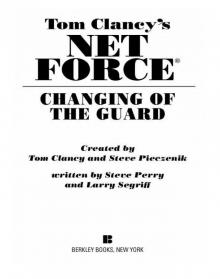 Changing of the Guard
Changing of the Guard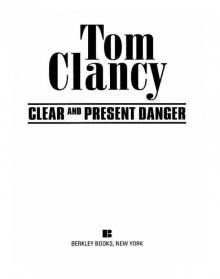 Clear and Present Danger
Clear and Present Danger Hounds of Rome
Hounds of Rome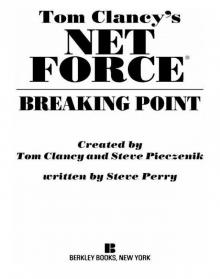 Breaking Point
Breaking Point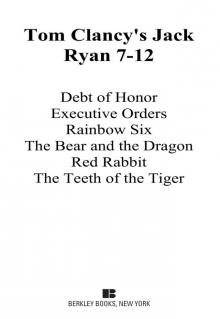 Tom Clancy's Jack Ryan Books 7-12
Tom Clancy's Jack Ryan Books 7-12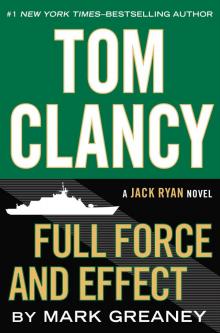 Full Force and Effect
Full Force and Effect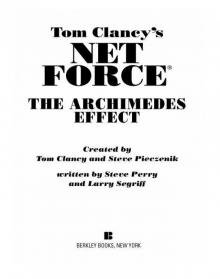 The Archimedes Effect
The Archimedes Effect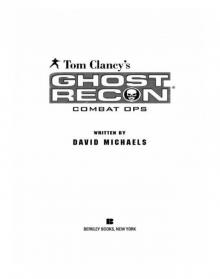 Combat Ops
Combat Ops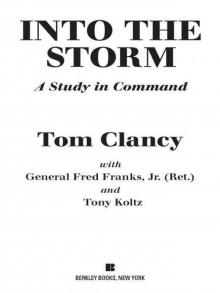 Into the Storm: On the Ground in Iraq
Into the Storm: On the Ground in Iraq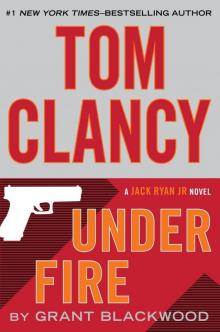 Under Fire
Under Fire Point of Impact
Point of Impact Red Rabbit
Red Rabbit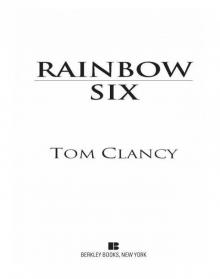 Rainbow Six
Rainbow Six The Hunt for Red October
The Hunt for Red October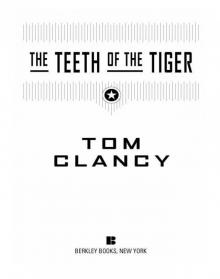 The Teeth of the Tiger
The Teeth of the Tiger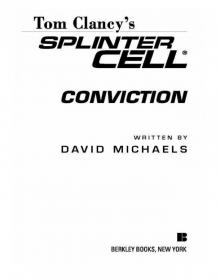 Conviction (2009)
Conviction (2009)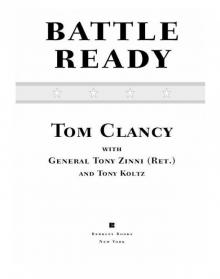 Battle Ready
Battle Ready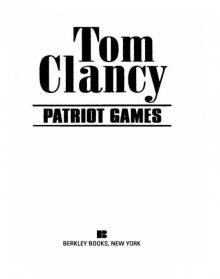 Patriot Games
Patriot Games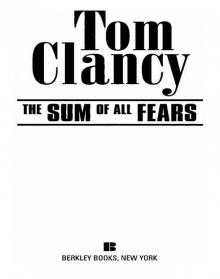 The Sum of All Fears
The Sum of All Fears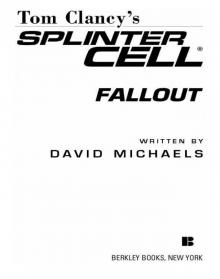 Fallout (2007)
Fallout (2007) Red Storm Rising
Red Storm Rising The Cardinal of the Kremlin
The Cardinal of the Kremlin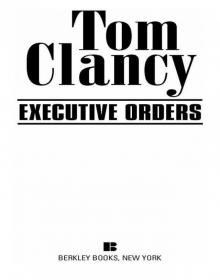 Executive Orders
Executive Orders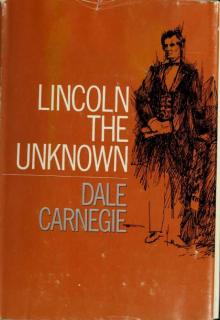 Lincoln, the unknown
Lincoln, the unknown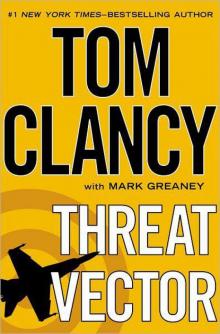 Threat Vector
Threat Vector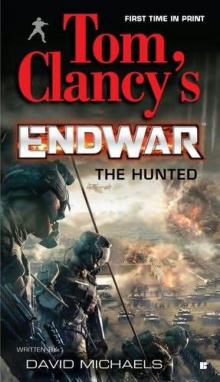 The Hunted
The Hunted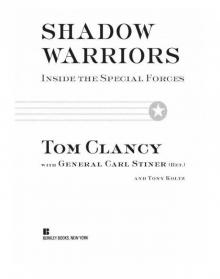 Shadow Warriors: Inside the Special Forces
Shadow Warriors: Inside the Special Forces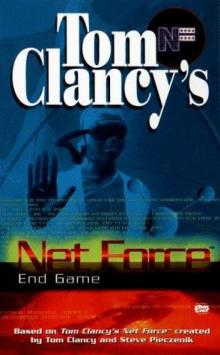 End Game
End Game Special Forces: A Guided Tour of U.S. Army Special Forces
Special Forces: A Guided Tour of U.S. Army Special Forces Locked On
Locked On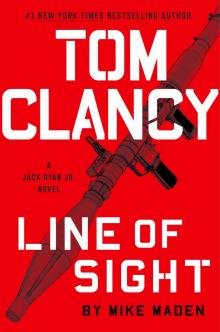 Line of Sight
Line of Sight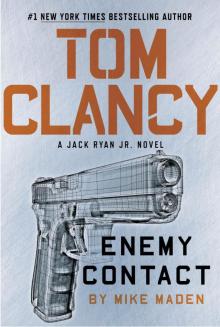 Tom Clancy Enemy Contact - Mike Maden
Tom Clancy Enemy Contact - Mike Maden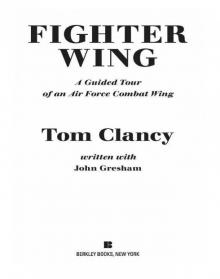 Fighter Wing: A Guided Tour of an Air Force Combat Wing
Fighter Wing: A Guided Tour of an Air Force Combat Wing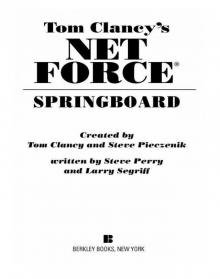 Springboard
Springboard Line of Sight - Mike Maden
Line of Sight - Mike Maden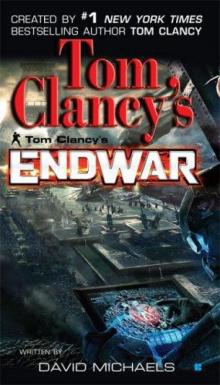 EndWar
EndWar Dead or Alive
Dead or Alive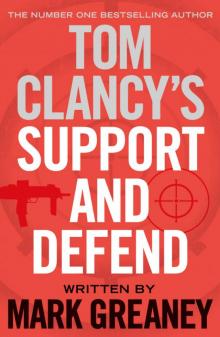 Tom Clancy Support and Defend
Tom Clancy Support and Defend Checkmate
Checkmate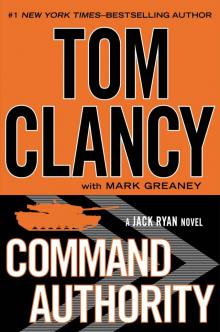 Command Authority
Command Authority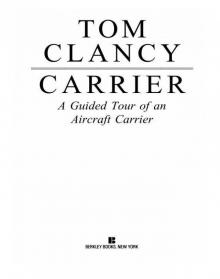 Carrier: A Guided Tour of an Aircraft Carrier
Carrier: A Guided Tour of an Aircraft Carrier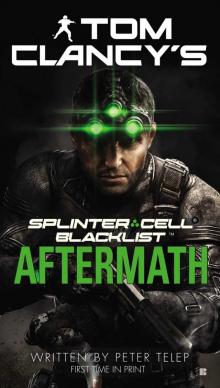 Blacklist Aftermath
Blacklist Aftermath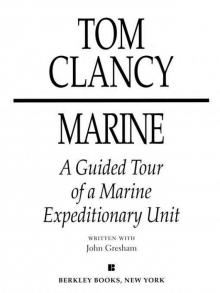 Marine: A Guided Tour of a Marine Expeditionary Unit
Marine: A Guided Tour of a Marine Expeditionary Unit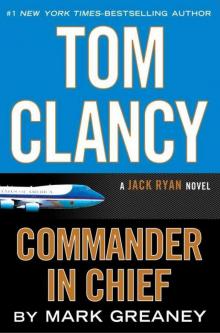 Commander-In-Chief
Commander-In-Chief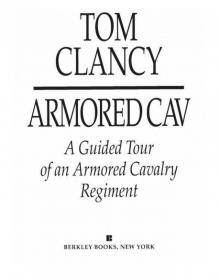 Armored Cav: A Guided Tour of an Armored Cavalry Regiment
Armored Cav: A Guided Tour of an Armored Cavalry Regiment Tom Clancy's Jack Ryan Books 1-6
Tom Clancy's Jack Ryan Books 1-6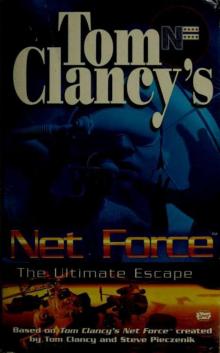 The Ultimate Escape
The Ultimate Escape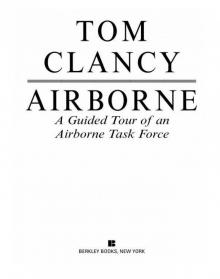 Airborne: A Guided Tour of an Airborne Task Force
Airborne: A Guided Tour of an Airborne Task Force Debt of Honor
Debt of Honor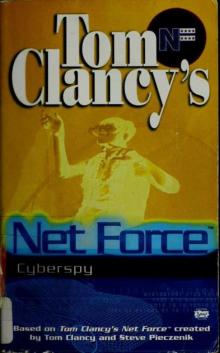 Cyberspy
Cyberspy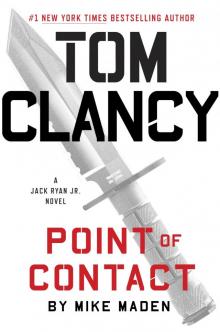 Point of Contact
Point of Contact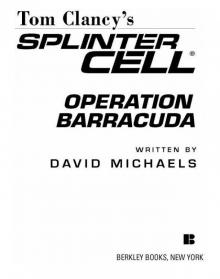 Operation Barracuda (2005)
Operation Barracuda (2005)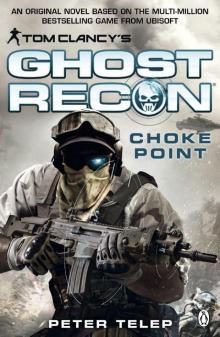 Choke Point
Choke Point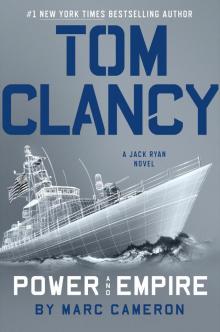 Power and Empire
Power and Empire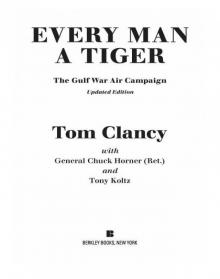 Every Man a Tiger: The Gulf War Air Campaign
Every Man a Tiger: The Gulf War Air Campaign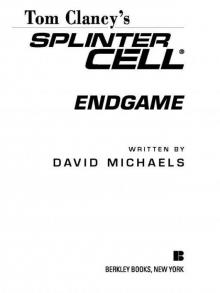 Endgame (1998)
Endgame (1998)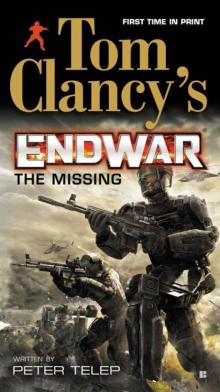 EndWar: The Missing
EndWar: The Missing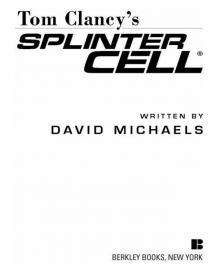 Splinter Cell (2004)
Splinter Cell (2004)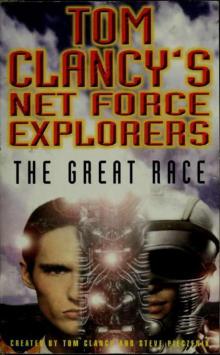 The Great Race
The Great Race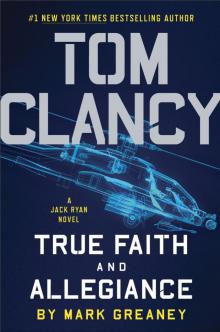 True Faith and Allegiance
True Faith and Allegiance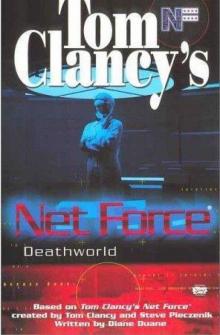 Deathworld
Deathworld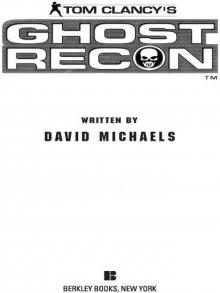 Ghost Recon (2008)
Ghost Recon (2008)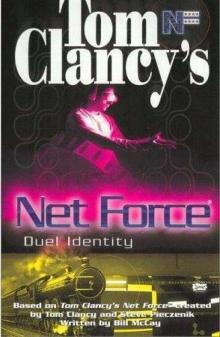 Duel Identity
Duel Identity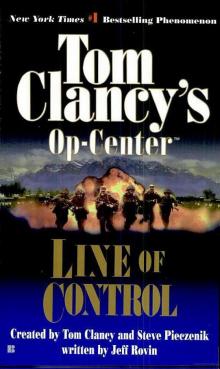 Line of Control o-8
Line of Control o-8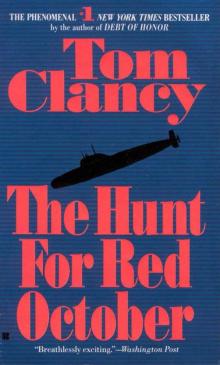 The Hunt for Red October jr-3
The Hunt for Red October jr-3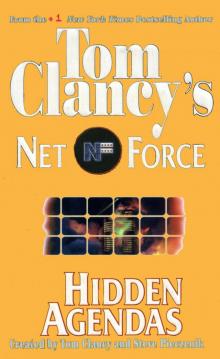 Hidden Agendas nf-2
Hidden Agendas nf-2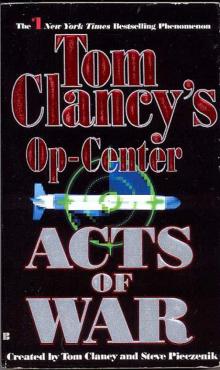 Acts of War oc-4
Acts of War oc-4 Ruthless.Com pp-2
Ruthless.Com pp-2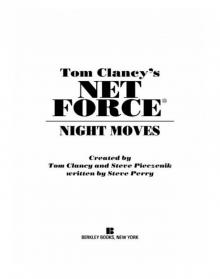 Night Moves
Night Moves The Hounds of Rome - Mystery of a Fugitive Priest
The Hounds of Rome - Mystery of a Fugitive Priest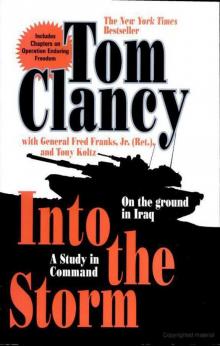 Into the Storm: On the Ground in Iraq sic-1
Into the Storm: On the Ground in Iraq sic-1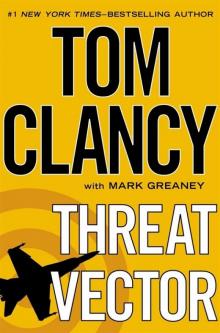 Threat Vector jrj-4
Threat Vector jrj-4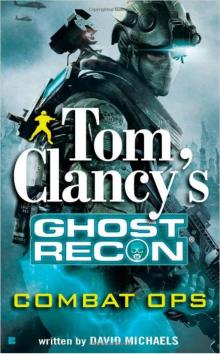 Combat Ops gr-2
Combat Ops gr-2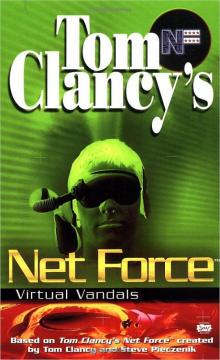 Virtual Vandals nfe-1
Virtual Vandals nfe-1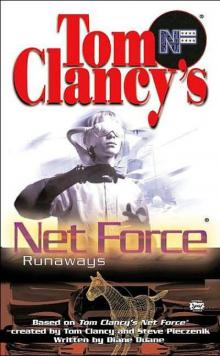 Runaways nfe-16
Runaways nfe-16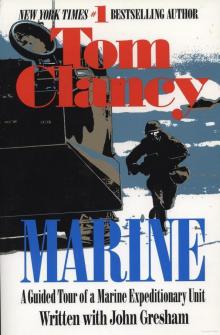 Marine: A Guided Tour of a Marine Expeditionary Unit tcml-4
Marine: A Guided Tour of a Marine Expeditionary Unit tcml-4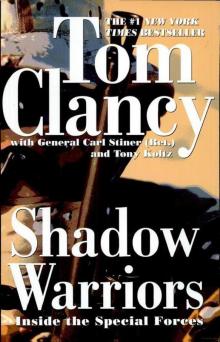 Shadow Warriors: Inside the Special Forces sic-3
Shadow Warriors: Inside the Special Forces sic-3 Jack Ryan Books 1-6
Jack Ryan Books 1-6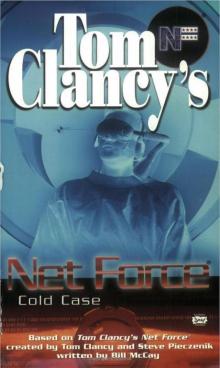 Cold Case nfe-15
Cold Case nfe-15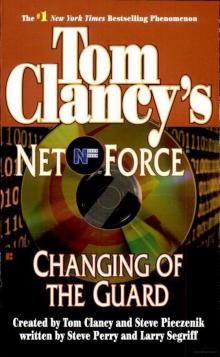 Changing of the Guard nf-8
Changing of the Guard nf-8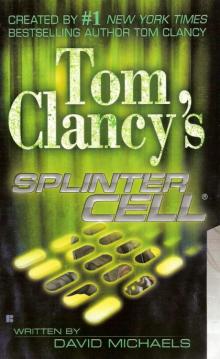 Splinter Cell sc-1
Splinter Cell sc-1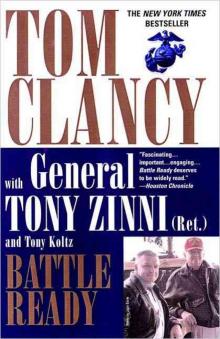 Battle Ready sic-4
Battle Ready sic-4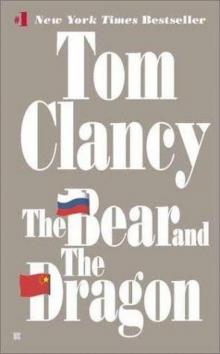 The Bear and the Dragon jrao-11
The Bear and the Dragon jrao-11 Fighter Wing: A Guided Tour of an Air Force Combat Wing tcml-3
Fighter Wing: A Guided Tour of an Air Force Combat Wing tcml-3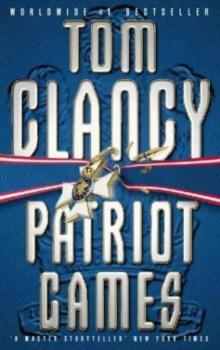 Patriot Games jr-1
Patriot Games jr-1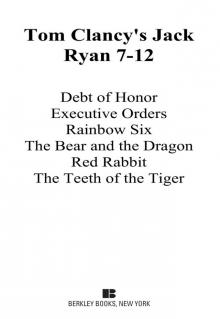 Jack Ryan Books 7-12
Jack Ryan Books 7-12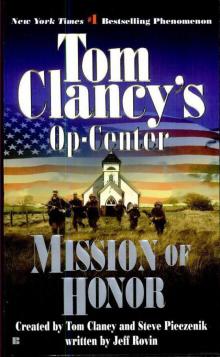 Mission of Honor o-9
Mission of Honor o-9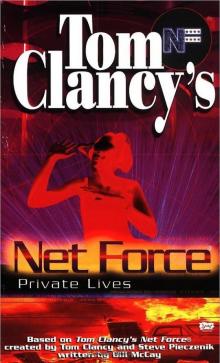 Private Lives nfe-9
Private Lives nfe-9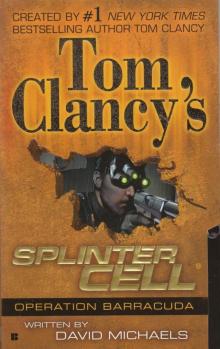 Operation Barracuda sc-2
Operation Barracuda sc-2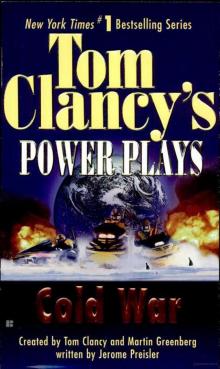 Cold War pp-5
Cold War pp-5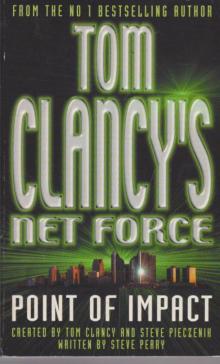 Point of Impact nf-5
Point of Impact nf-5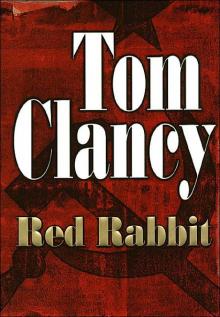 Red Rabbit jr-9
Red Rabbit jr-9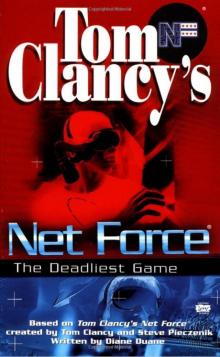 The Deadliest Game nfe-2
The Deadliest Game nfe-2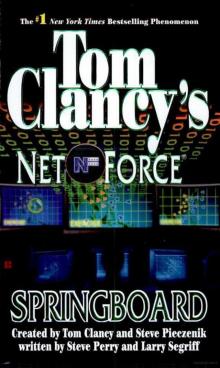 Springboard nf-9
Springboard nf-9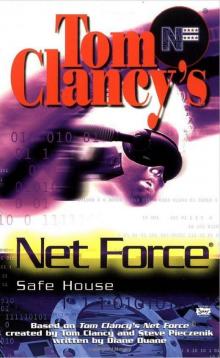 Safe House nfe-10
Safe House nfe-10 EndWar e-1
EndWar e-1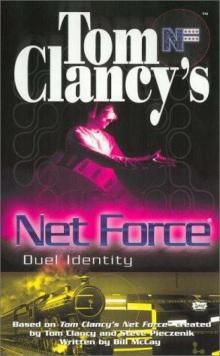 Duel Identity nfe-12
Duel Identity nfe-12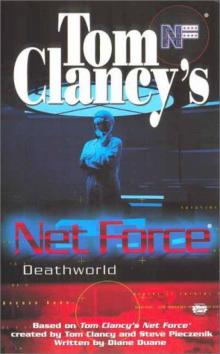 Deathworld nfe-13
Deathworld nfe-13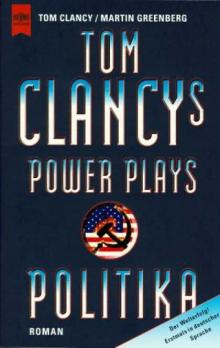 Politika pp-1
Politika pp-1 Rainbow Six jr-9
Rainbow Six jr-9 Tom Clancy's Power Plays 1 - 4
Tom Clancy's Power Plays 1 - 4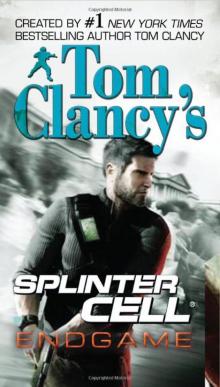 Endgame sc-6
Endgame sc-6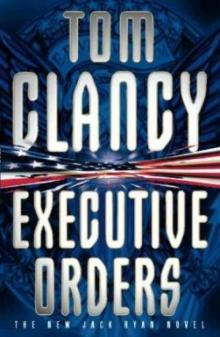 Executive Orders jr-7
Executive Orders jr-7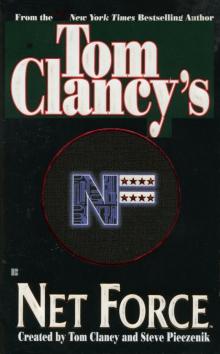 Net Force nf-1
Net Force nf-1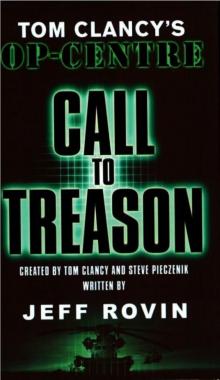 Call to Treason o-11
Call to Treason o-11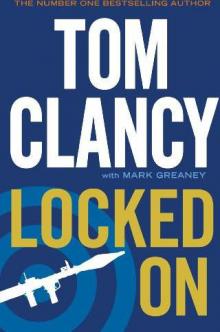 Locked On jrj-3
Locked On jrj-3 Against All Enemies
Against All Enemies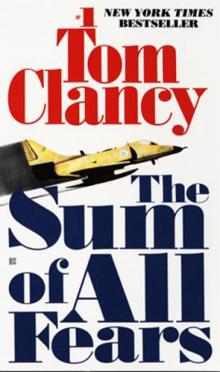 The Sum of All Fears jr-7
The Sum of All Fears jr-7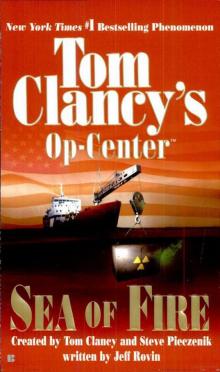 Sea of Fire o-10
Sea of Fire o-10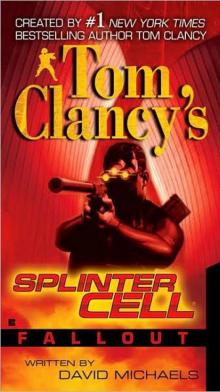 Fallout sc-4
Fallout sc-4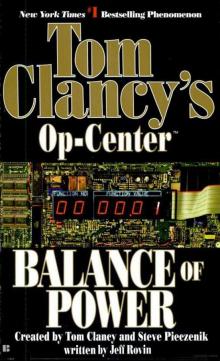 Balance of Power o-5
Balance of Power o-5 Shadow Watch pp-3
Shadow Watch pp-3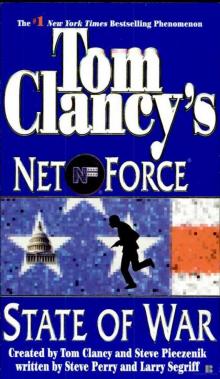 State of War nf-7
State of War nf-7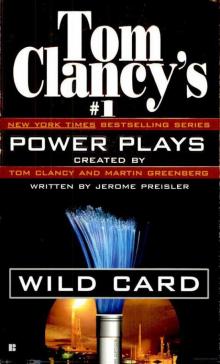 Wild Card pp-8
Wild Card pp-8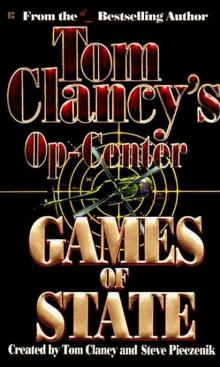 Games of State o-3
Games of State o-3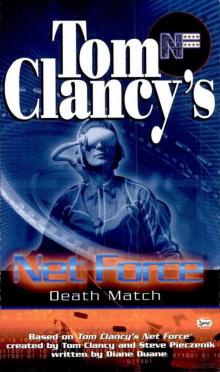 Death Match nfe-18
Death Match nfe-18 Against All Enemies mm-1
Against All Enemies mm-1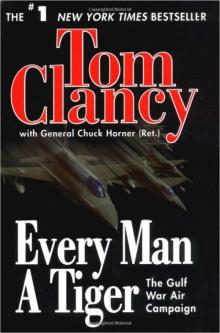 Every Man a Tiger: The Gulf War Air Campaign sic-2
Every Man a Tiger: The Gulf War Air Campaign sic-2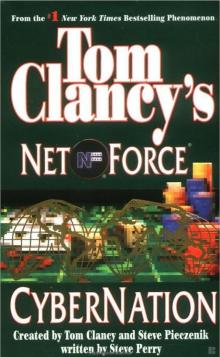 Cybernation nf-6
Cybernation nf-6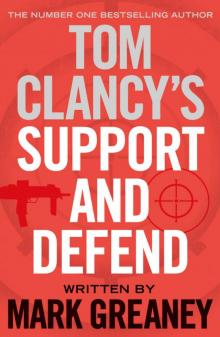 Support and Defend
Support and Defend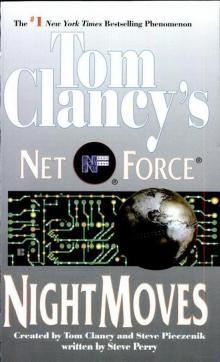 Night Moves nf-3
Night Moves nf-3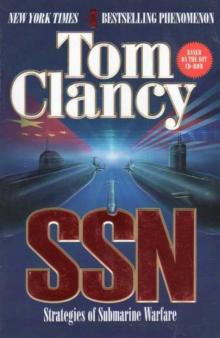 SSN
SSN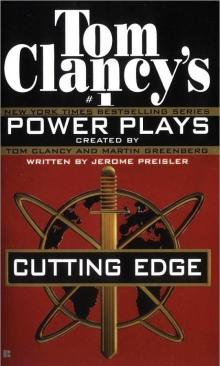 Cutting Edge pp-6
Cutting Edge pp-6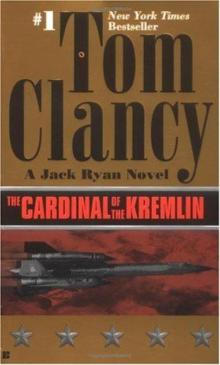 The Cardinal of the Kremlin jrao-5
The Cardinal of the Kremlin jrao-5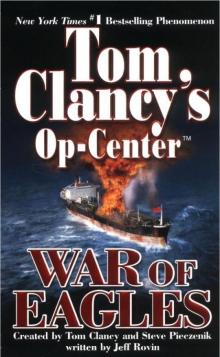 War of Eagles o-12
War of Eagles o-12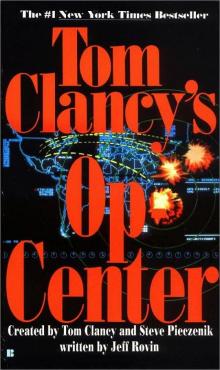 Op-Center o-1
Op-Center o-1 Mirror Image o-2
Mirror Image o-2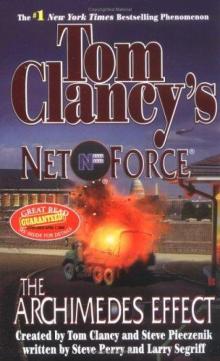 The Archimedes Effect nf-10
The Archimedes Effect nf-10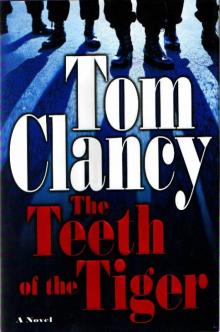 Teeth of the Tiger jrj-1
Teeth of the Tiger jrj-1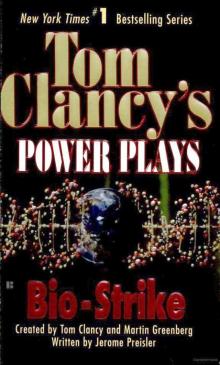 Bio-Strike pp-4
Bio-Strike pp-4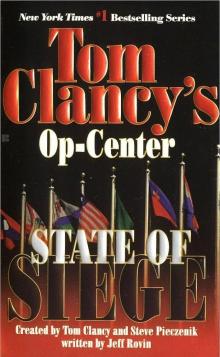 State of Siege o-6
State of Siege o-6 Debt of Honor jr-6
Debt of Honor jr-6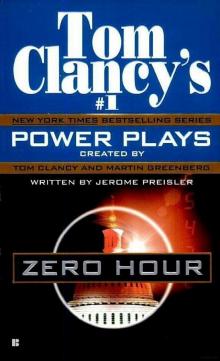 Zero Hour pp-7
Zero Hour pp-7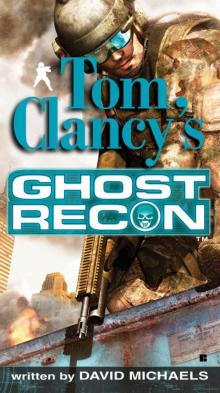 Ghost Recon gr-1
Ghost Recon gr-1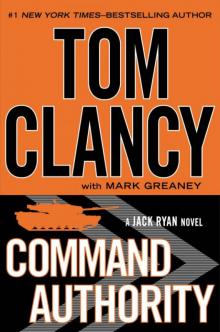 Command Authority jr-10
Command Authority jr-10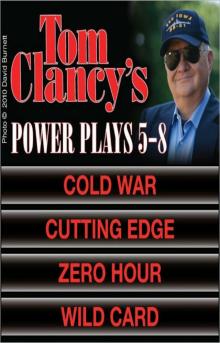 Tom Clancy's Power Plays 5 - 8
Tom Clancy's Power Plays 5 - 8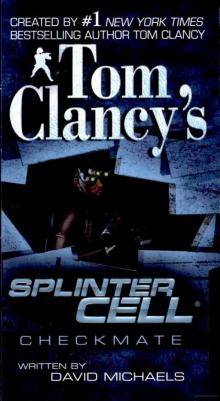 Checkmate sc-3
Checkmate sc-3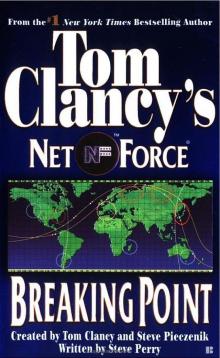 Breaking Point nf-4
Breaking Point nf-4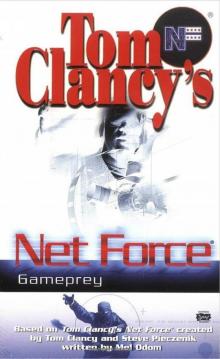 Gameprey nfe-11
Gameprey nfe-11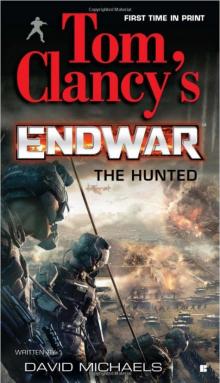 The Hunted e-2
The Hunted e-2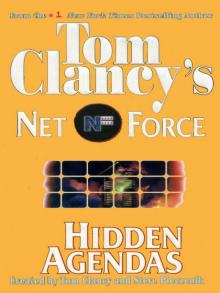 Hidden Agendas
Hidden Agendas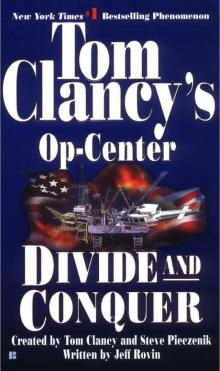 Divide and Conquer o-7
Divide and Conquer o-7